Wendy Red Star: “It’s Hard to Step Out of the Colonial Framework We All Grew Up In”
By Keshav AnandNourished by her upbringing on the Apsáalooke (Crow) reservation in Montana, Wendy Red Star’s practice spans diverse outputs, including painting, photography, installation, performance and garment design. She was surrounded by creativity from a young age: her father was a rock musician, her uncle a painter, and her grandmother crafted traditional regalia. The Portland-based artist’s work layers and juxtaposes Crow histories with conceptual art strategies, pop culture references, and museology, reconfiguring colonial narratives. Open now and running until 1 September 2024, Gathering London presents Red Star’s first solo exhibition in Europe, titled In the Shadow of Paper Mountains. To learn more about the new show and Red Star’s expansive practice, Something Curated’s Keshav Anand spoke with the artist.
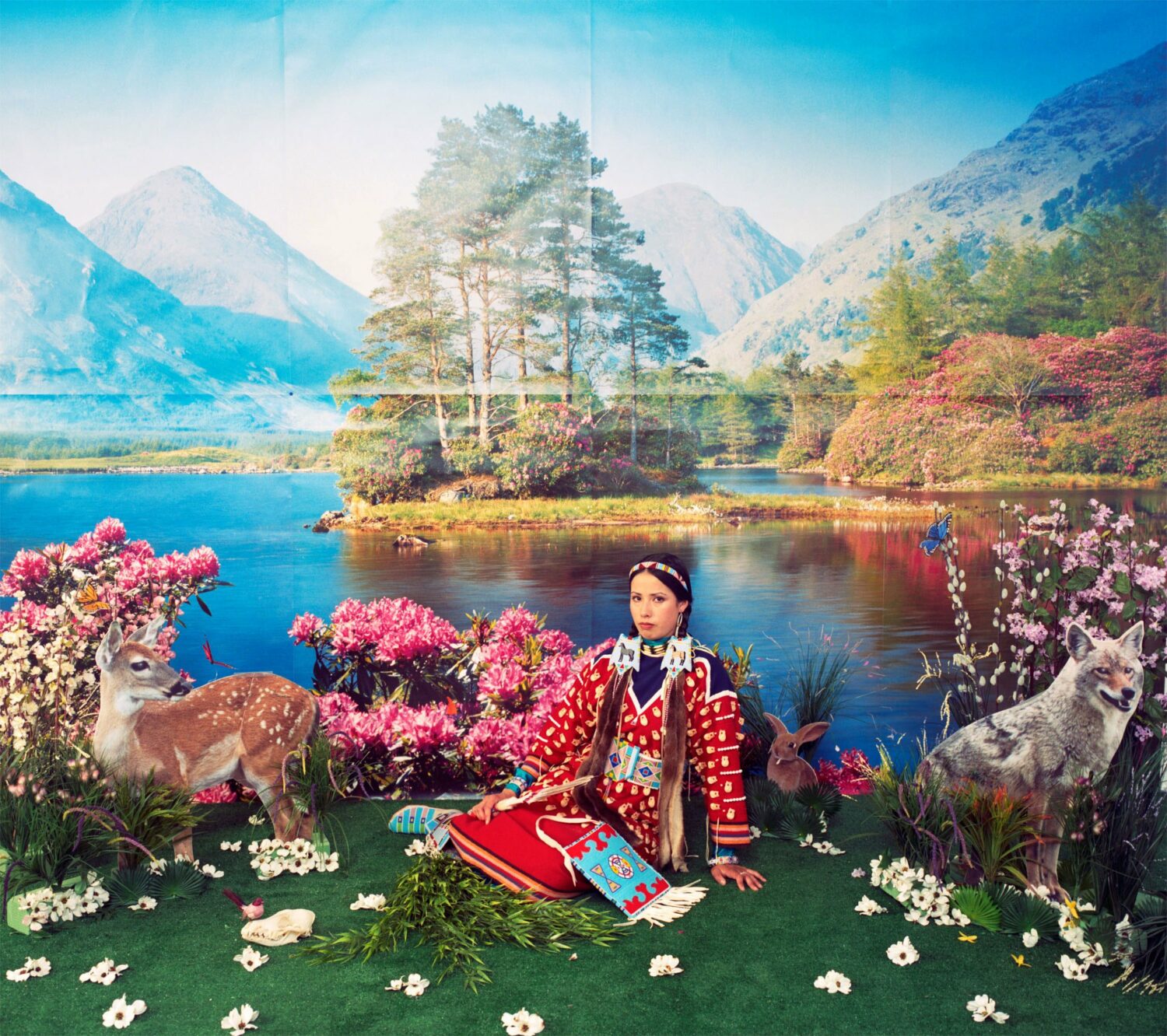
Keshav Anand: What role do museological traditions play in your interrogation of colonial structures?
Wendy Red Star: Regarding my artistic practice and how I interface with museology, it’s specifically driven by the way in which an institution catalogues, displays, and shares the material culture of my community, the Apsáalooke. This is typical in the way that museums display any material culture outside of the Western scope. If you think about it, the community, the culture, and the place where I am from is what I know. So, it’s like having a stranger take your stuff and present it to the world. Most of the time, it’s not as interesting or correct because it comes from an outsider’s perspective.
When I have an opportunity to work with collections that have Apsáalooke material—whether that be physical objects, field recordings, papers, or photographs—it’s an opportunity for me to reorganise and provide order from my perspective as a member of that community. Oftentimes, I will utilise the existing institutional structure, as that is now part of the narrative of the history of those materials. It’s also a way to bridge the Western outsider to engage with this contextual perspective.
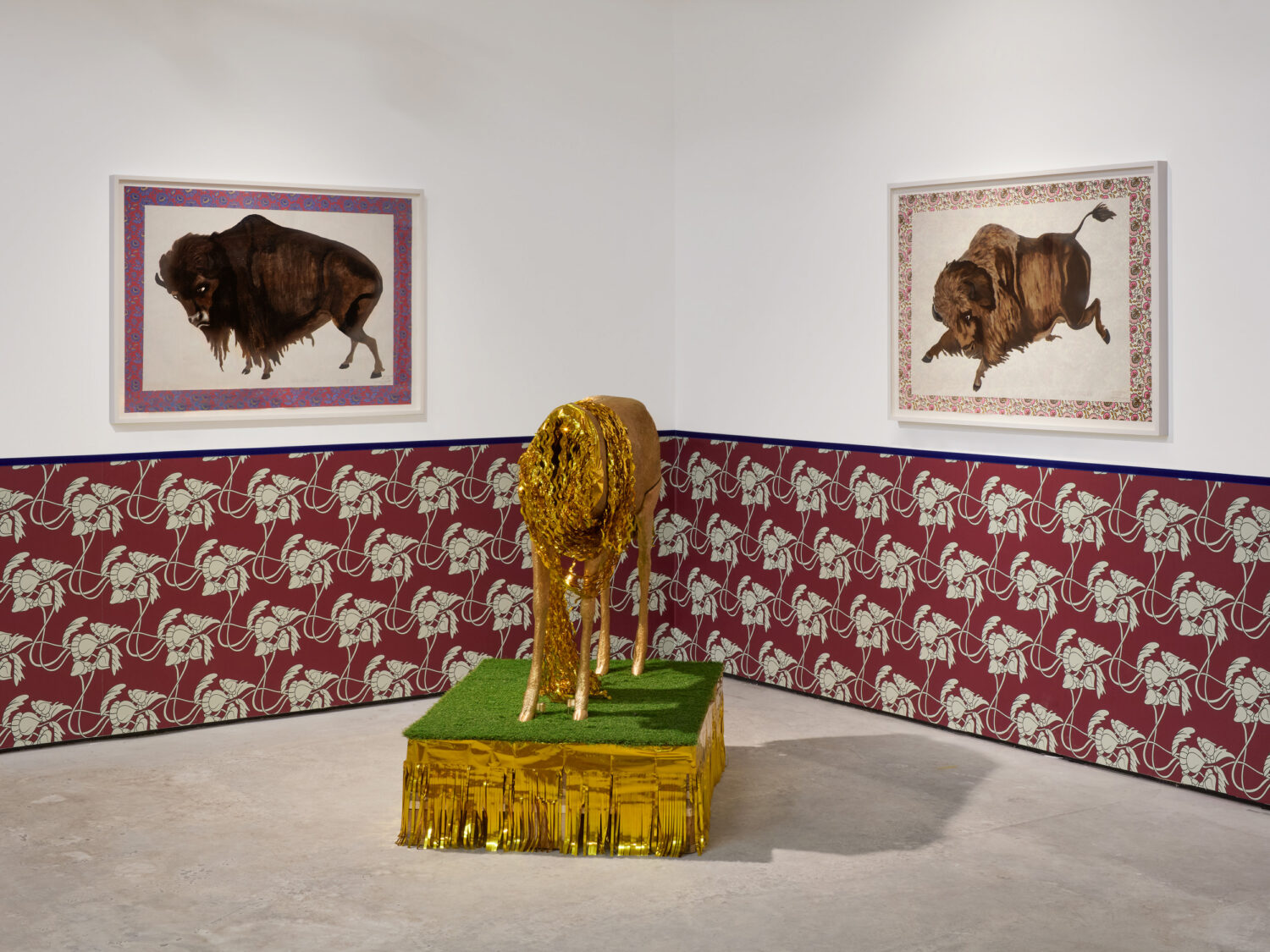
It’s hard to step out of the colonial framework we all grew up in. It might sound radical for me to say that I’m coming into the institution to change the narrative of these objects. People might find that radical, but actually, the narrative the institution has placed on these materials is radical. It’s like a stranger coming into your home, taking your stuff, and then presenting it to the world with the dominant narrative being from their understanding. It just doesn’t make sense.
When people encounter my work, they feel like they are learning something new because I am presenting these works within the context and understanding from where those materials, people, and culture originate. It’s pretty straightforward.
KA: How have you approached creating and selecting works to include in your new presentation at Gathering?
WRS: I’m excited to have the opportunity to have my first solo presentation in Europe at Gathering in London. When I was approached by Alex Flick, I wanted to find a connection in which the UK could relate to the US and to someone like myself who is from an Indigenous community in North America. I thought about the early connections between Europe and North America, which were centred around resources and the imperialistic need to extract them. This early resource extraction shaped the relations between the two regions and had everything to do with the native people of North America.
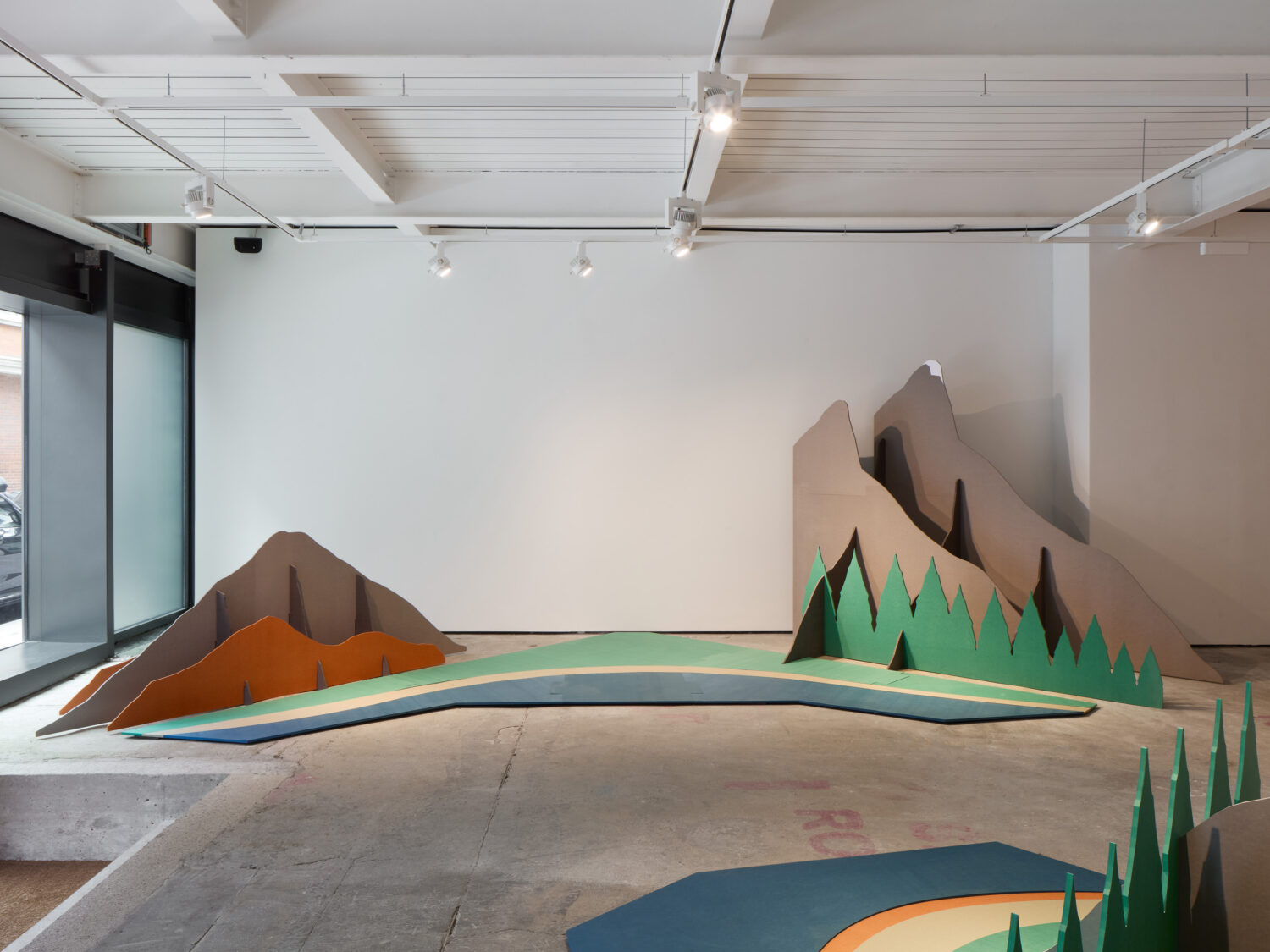
For this exhibition, I focused on the early fur trade and its connection to Europe, and how it shaped history and the understanding of these two different places. I was also inspired by early depictions of the West, particularly George Catlin’s paintings of wounded buffalo. These are very early depictions of a species that almost came to the brink of extinction, an animal that was highly honoured by the Plains people. In contrast, white settlers viewed buffalo as a burden to their colonial efforts to acquire and manufacture the land.
An installation based on a pop-up greeting card mountain will be the first thing people encounter in the space. It features a mountain range made to look like it’s made out of greeting card stock paper, with a soundtrack of field recordings from Yellowstone National Park. This creates a contrast between the fictional mountain range and the raw, real field recordings, encouraging viewers to immerse themselves in this juxtaposition. Another body of work includes headless golden deer with mylar fringe spilling out of their necks, referencing resource extraction, trophy hunting, and the importance of honouring the entire animal.
KA: Could you expand on the use of humour as a critical tool in your work?
WRS: This relates to the idea of taking popular culture elements presented by the dominant colonial narrative and flipping them to show how they come off to me. This often results in absurdity. The reality of the situation is always present, and when it’s flipped, people are often stunned or shocked by the actual reality. The romanticised narrative that has been presented is often far from the truth. I’m not necessarily trying to be funny, but the contrast between reality and the romanticised narrative can be humorous.
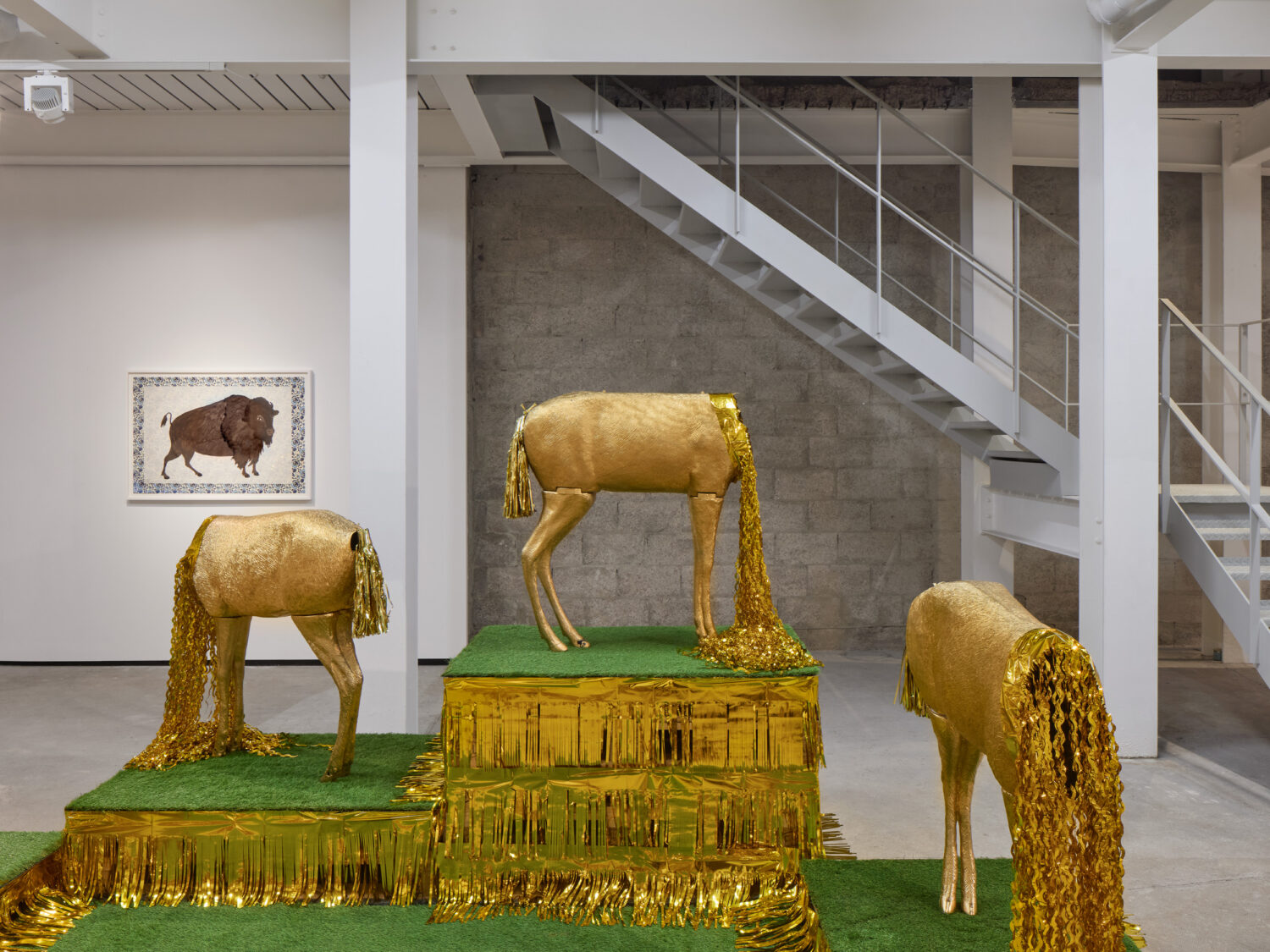
KA: How has collaborating with your daughter influenced your creative process?
WRS: My daughter, who will soon be 17, has been a huge influence on my art journey. We started collaborating when she was seven, and although she retired at 11, she occasionally comes out of retirement for special projects. She has rearranged and restructured my entire life, helping me prioritise what is important to me and what I need to learn and hold on to so I can pass it down to her. Even though we don’t collaborate as often now, she still has the biggest influence on my artistic practice.
KA: If you could time travel to any period in history, where would you go and what would you do there?
WRS: I have an ancestor named Green Skin, my fourth great-grandfather, who lived before the time of white settler contact. I would love to experience that time with him. I would also love to visit the 1940s and 1950s when my dad was a little boy, as that history is just as fascinating. It’s hard to choose just one period, so I’ll go with these two.
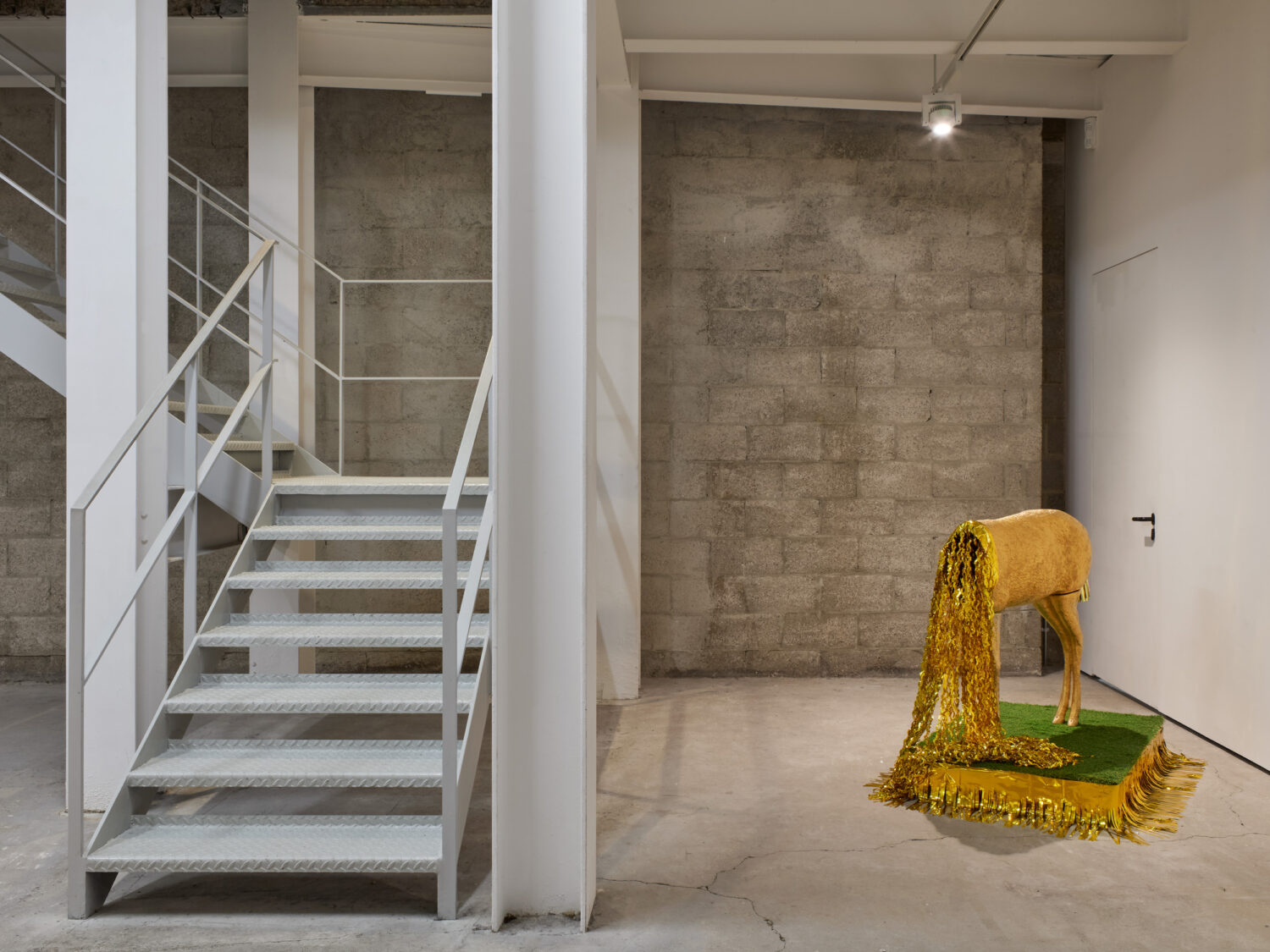
KA: What are your favourite cultural spaces in Portland?
WRS: My favourite cultural space in Portland is actually the Columbia River Gorge. It’s one of the reasons why I stay in the Pacific Northwest. The Gorge has amazing waterfall hikes, and anytime I need to work through ideas or find inspiration, nature is my go-to. The sound of water and the beauty of the Gorge make it the best cultural space I’ve ever been to.
KA: And what are you currently reading?
WRS: I’ve been doing a lot of reading on the last chief of the Crow Nation, chief Plenty Coups, who died in the 1930s. I’m reading various archival materials from the Smithsonian Institution’s archives, including news articles and files on material objects in the National Museum of the American Indian. This has been my main focus recently.
Feature image: Installation view of Wendy Red Star’s In the Shadow of Paper Mountains at Gathering London. Courtesy Gathering London